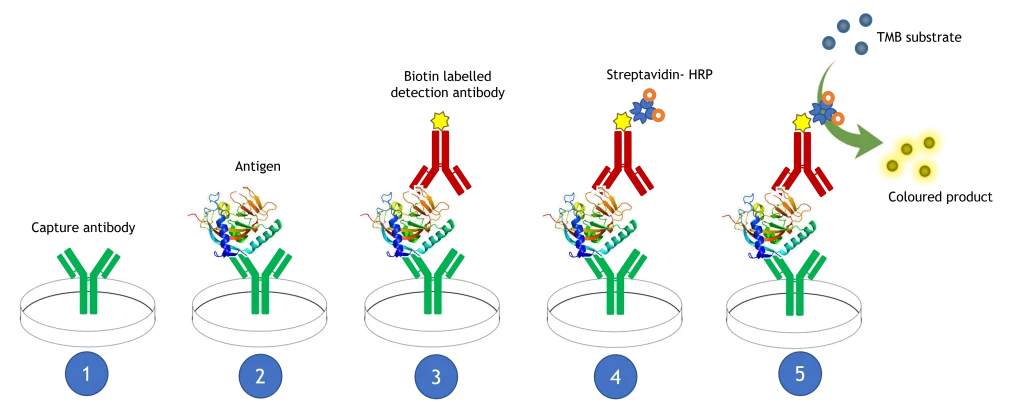Enzyme-linked immunosorbent assay (ELISA) is one of the most common methods for the quantification of analytes in samples. The projects that we run for our clients range from simple outsourced ELISAs to assay development for various applications (clinical, allergen, etc.). Typically, we go through the following workflow to engage each client and provide the best-tailored service.
How ELISA Works:

ELISA (enzyme-linked immunosorbent assay) is a plate-based assay technique designed for detecting and quantifying soluble substances such as peptides, proteins, antibodies, and hormones. In an ELISA, the antigen (target macromolecule) is immobilized on a solid surface (micro-plate) and then complexed with an antibody that is linked to a reporter enzyme. Detection is accomplished by measuring the activity of the reporter enzyme via incubation with the appropriate substrate to produce a measurable product. The most crucial element of an ELISA is a highly specific antibody-antigen interaction. It is a powerful method for detecting and quantifying a specific protein in a complex mixture. The method enables the analysis of protein samples immobilized in micro-plate wells using specific antibodies. ELISAs are typically performed in multi-well polystyrene plates, which passively bind antibodies and proteins. This makes it easy to separate bound from non-bound material during the assay. This ability to use high-affinity antibodies and wash away non-specific bound materials makes ELISA a powerful tool for measuring specific analytes within a crude preparation.
There are four main types of ELISA: Direct ELISA, Indirect ELISA, Sandwich ELISA, and Competitive ELISA. Each has unique advantages, disadvantages, and suitability.

